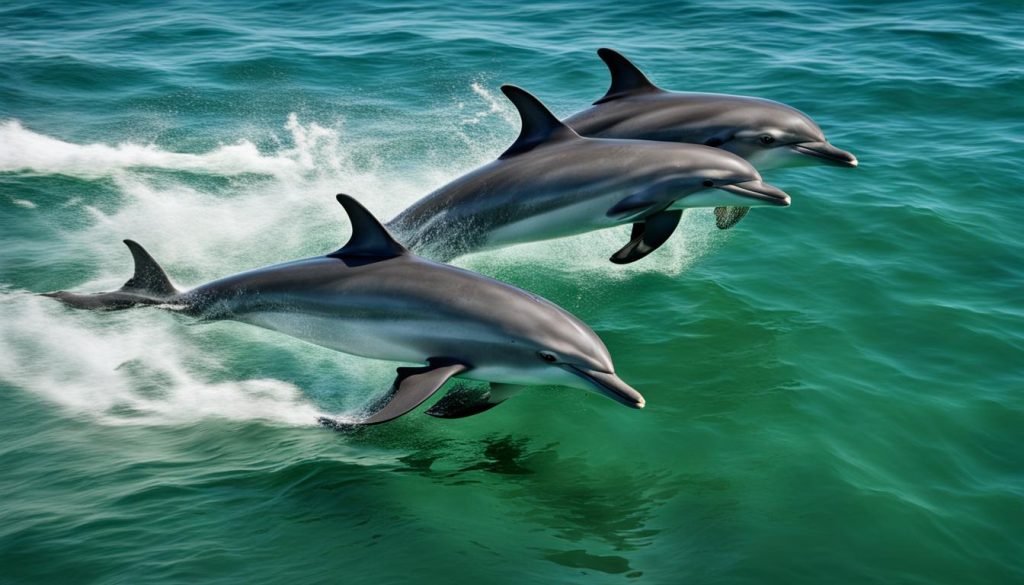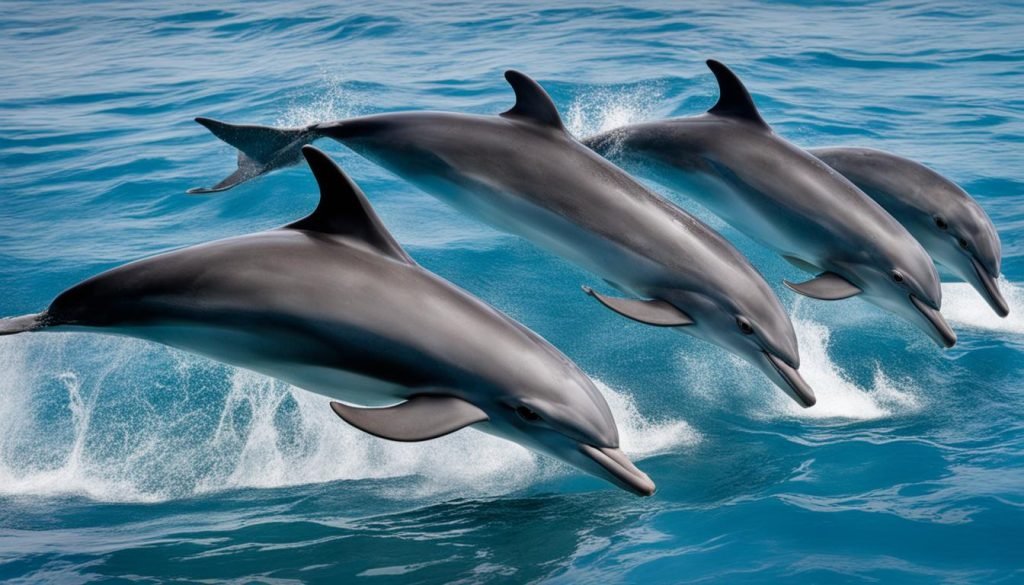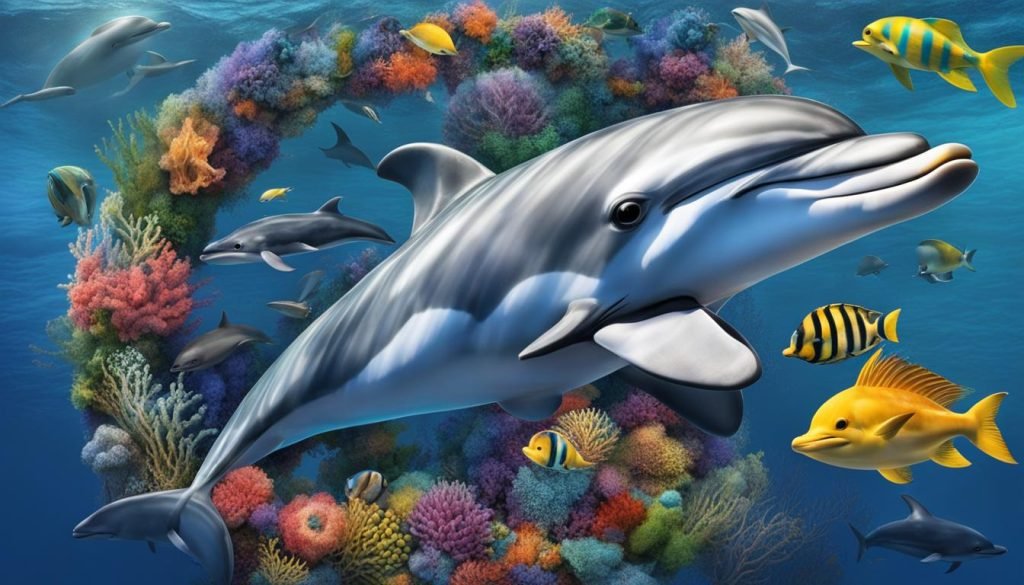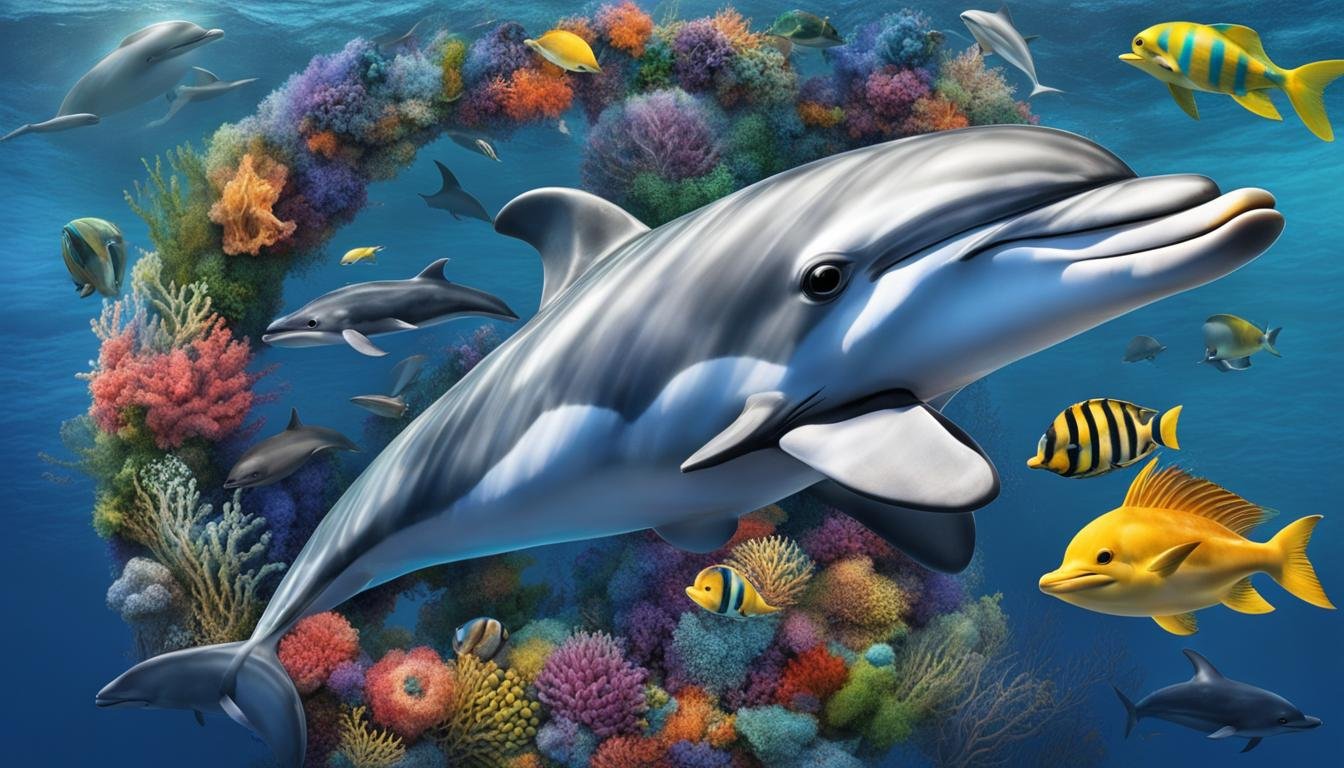Exploring Lifespan: How Long Do Dolphins Live?
Dolphins are one of the most beloved marine mammals globally, known for their playful behavior and remarkable intelligence. However, how long do dolphins live? What is their average lifespan? In this section, we will dive into the topic of dolphin lifespan, exploring the factors that influence their longevity and well-being.
Dolphins belong to the family Delphinidae, which has over 90 species, including the Bottlenose Dolphin, Spotted Dolphin, and Risso’s Dolphin. Despite their different physical characteristics and habitats, most dolphins exhibit a similar lifespan in the wild.
Dolphins’ lifespan ranges from 20 to 60 years, depending on various factors like species, habitat, and human impact.
However, some exceptional cases have recorded dolphins living beyond the average lifespan, highlighting the importance of understanding how these creatures live and what factors contribute to their longevity.
Key Takeaways
- Dolphins have an average lifespan of 20 to 60 years
- Factors such as species, habitat, and human impact can influence dolphin lifespan
- Conservation efforts are necessary to preserve dolphin populations and support their longevity
- Understanding the lifespan of dolphins can help us protect and appreciate these incredible marine creatures
Dolphin Lifespan in the Wild

The lifespan of dolphins in the wild is highly dependent on various factors that determine their physical and mental well-being. Predators, disease, and environmental factors can all impact their lifespan. However, some factors contribute positively to their lifespan.
A study published by the Journal of Mammalogy revealed that bottlenose dolphins have a higher survival rate in the wild when living in larger groups. Pods of bottlenose dolphins that have a higher number of adult females experience a higher survival rate, which subsequently increases their lifespan. Additionally, dolphins living in offshore waters have a higher life expectancy compared to those living in coastal waters due to the lower threat of human interference.
On the other hand, anthropogenic factors, such as ocean pollution, climate change, loss of habitat, and overfishing, have detrimental effects on dolphin populations. Human activities can lead to stress, disease, and malnutrition in dolphins, shortening their lifespan and reducing their population numbers. For instance, the use of sonar by military vessels can cause severe damage to dolphin sonar navigation systems. This can lead to disorientation, strandings, and damage to essential organs, ultimately impacting the dolphin’s lifespan.
A recent report by the World Wildlife Fund (WWF) highlights the impact of climate change on the habitat and food sources of dolphins. As ocean temperatures rise along with levels of CO2, the ecosystem composition of the ocean changes, and marine life, including dolphins, must adapt to survive. If they fail to adapt, the entire food web can collapse, causing a significant reduction in dolphin lifespan.
Factors Affecting Dolphin Lifespan
The following table summarizes the main factors that can affect dolphin lifespan:
| Factors Affecting Lifespan | Pod size, structure, and hierarchy impact survival rates, hence lifespans |
|---|---|
| Predation | Shorter lifespan due to increased mortality rates |
| Environment | Influence on dolphin health and survival, leading to variations in lifespan |
| Diet | Malnourished dolphins have shorter lifespans |
| Social Interactions | Can have negative effects on dolphin health, leading to a shorter lifespan |
| Human Activities | Can have negative effects on dolphin health, leading to shorter lifespan |
It is evident from the table that dolphins’ lifespan is significantly impacted by human activities, predation, and environmental factors. Efforts to conserve and protect dolphins from these factors are crucial in ensuring their survival and longevity.
How Long Do Dolphins Live? Maximum Lifespan of Dolphins

Ever wondered how long dolphins can live? While the average lifespan of dolphins varies across species and regions, there have been exceptional cases of dolphins living beyond their expected lifespan.
According to studies, the maximum recorded lifespan of dolphins is between 40 to 50 years for females and 30 to 40 years for males.
However, there have been outliers that have exceeded this lifespan.
| Dolphin Species | Maximum Lifespan (in the wild) |
|---|---|
| Bottlenose Dolphin | 59 years |
| Pacific White-Sided Dolphin | 43 years |
| Spinner Dolphin | 25 years |
These exceptions may be due to a combination of various factors, including genetics, environment, social interactions, and diet. For instance, studies have shown that bottlenose dolphins living in Sarasota Bay, Florida, have a significantly longer lifespan than those in other areas due to their access to a rich and varied diet.
Additionally, researchers have found evidence suggesting that stress levels may play a role in dolphin lifespan. Studies have shown that dolphins living in protected areas or reserves tend to live longer than those in exposed areas, indicating that human activity and environmental factors could contribute to dolphin mortality.
Although there have been instances of dolphins living longer than their expected lifespan, this is not necessarily the case for all dolphin populations. Factors such as pollution, habitat loss, and human disturbance can negatively impact dolphin populations and decrease their lifespan.
Understanding Dolphin Life Expectancy

Dolphin life expectancy varies depending on numerous factors, including species, habitat, and human impact. While some dolphins may live longer than others, their average lifespan generally ranges from 20 to 45 years in the wild and up to 60 years in captivity.
Research suggests that dolphins who live near human settlements with fishing industries tend to have shorter lifespans due to the increased risks of being caught in fishing gear, pollution, and habitat destruction caused by human activities.
Factors Affecting Dolphin Lifespan
Several factors can impact how long dolphins survive in the wild. These factors include:
- Habitat loss and degradation
- Climate change
- Ocean pollution
- Overfishing and bycatch
- Injuries and diseases
- Predators
Human activities, such as fishing, oil exploration, and marine tourism, contribute to these factors, causing significant harm to dolphin populations and their natural habitats. Conservation efforts, such as marine protected areas and sustainable fishing practices, are crucial for ensuring their survival and longevity.
Conservation Efforts for Protecting Dolphin Populations
Many organizations and governments around the world are working towards protecting and conserving dolphin populations and their habitats. These efforts include:
- Reducing bycatch rates and implementing sustainable fishing practices
- Protecting critical habitats and establishing marine protected areas
- Reducing pollution and promoting sustainable waste management practices
- Undertaking research and monitoring programs to better understand dolphin populations and their needs
With these initiatives in place, we can hope to improve the outlook for dolphins and increase their chances of survival in the wild. By educating ourselves about the factors that influence their lifespan, we can take action to protect and preserve these incredible marine creatures for generations to come.
Factors Affecting Dolphin Lifespan
Dolphins, like all living beings, face several factors that affect their lifespan. While some of these factors are natural, others are anthropogenic, driven by human activities such as pollution, habitat destruction, and overfishing. Understanding these factors is crucial in developing strategies to mitigate the threats to their survival and promoting their longevity.
One of the primary factors affecting dolphin lifespan is environmental degradation. Anthropogenic activities such as oil spills, plastic pollution, and chemical contamination have the potential to cause long-term damage to these marine mammals. Ingesting plastics, for example, can cause intestinal blockages and starvation. Similarly, exposure to toxic chemicals such as heavy metals or pesticides can impact their immune systems and cause reproductive issues, leading to population decline.
Another significant factor affecting dolphin lifespan is habitat loss and fragmentation. Dolphins are highly social animals that require large, interconnected areas to swim, hunt, and breed. The destruction of their habitats, such as mangroves, seagrass beds, and estuaries, can negatively impact their ability to find food and mate.
Climate change also affects dolphin populations, altering their habitats and putting stress on their physiological processes. The rising sea temperatures, ocean acidification, and extreme weather events have the potential to cause shifts in the prey distribution and ocean currents, thereby reducing the availability of food sources and changing the habitats in which dolphins live.
Other factors that impact dolphin lifespan include accidental deaths due to fishing nets, entanglement in marine debris, and boat collisions. Some diseases, such as morbillivirus or fungal infections, can also reduce their lifespan. Despite the numerous threats to their survival, dolphin populations have shown resilience when provided with adequate protection and conservation efforts.
Lifespan Differences Among Dolphin Species

Dolphin lifespan varies across different species, with some living much longer than others. Here’s a breakdown of dolphin lifespan for some of the most common species:
| Dolphin Species | Average Lifespan |
|---|---|
| Bottlenose Dolphin | 30-50 years |
| Spinner Dolphin | 20-25 years |
| Pacific White-Sided Dolphin | 40-45 years |
| Common Dolphin | 20-25 years |
These are just a few examples, but they highlight the fact that there is variation among the different dolphin species. So, what is the lifespan of dolphins, and what causes these differences?
One factor is size, with larger species generally having longer lifespans. Another important factor is their environment, with dolphins living in the wild having different lifespans compared to those in captivity. The amount of food available, population density, and other environmental factors can all play a role in dolphin lifespan.
It’s also worth noting that certain human activities, such as overfishing and pollution, can negatively impact dolphin lifespan. But, through conservation efforts and protecting their natural habitats, we can aim to preserve the health and longevity of these intelligent creatures.
Conclusion: Lifespan of Dolphins
In conclusion, dolphins live relatively long lives, with an average lifespan ranging from 20 to 45 years. However, some species can live much longer, with record-breaking cases of dolphins living beyond the age of 60. Factors such as environment, diet, predation, social interactions, and human impact can all influence the lifespan of dolphins.
It is important to note that the conservation of dolphins and their habitats is crucial in supporting their longevity. Overfishing, pollution, habitat loss, and climate change are all threats that can decrease the lifespan of dolphins. Therefore, it is vital to implement conservation efforts to protect these incredible marine creatures and ensure they continue to thrive in the wild.
Overall, the answer to the question, “Do dolphins live long?” is a resounding yes. With proper care and protection, we can appreciate and enjoy these magnificent creatures for many years to come.







